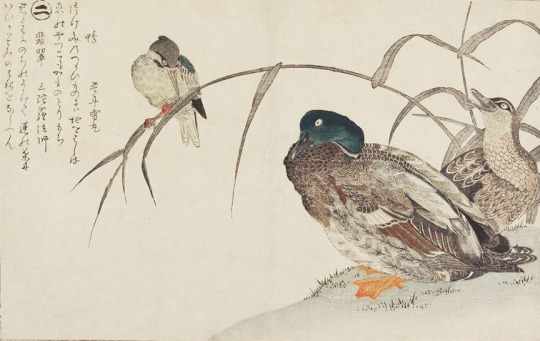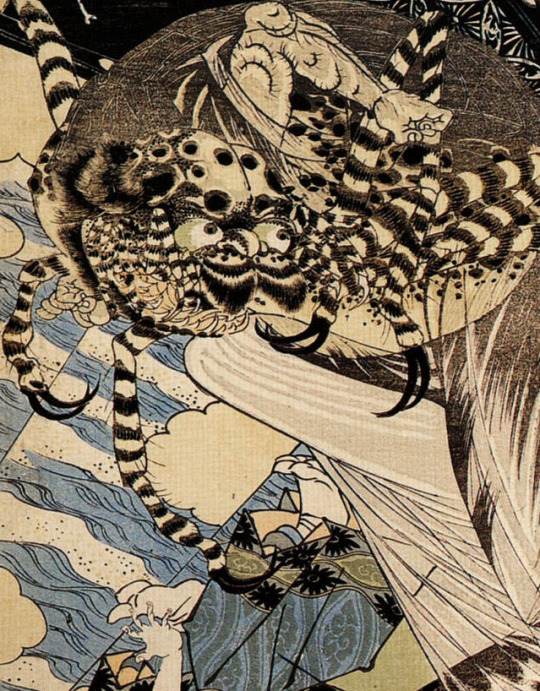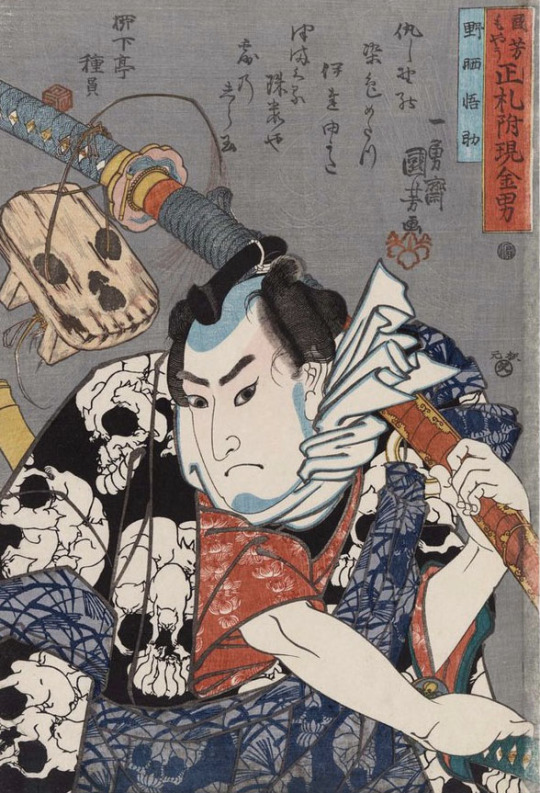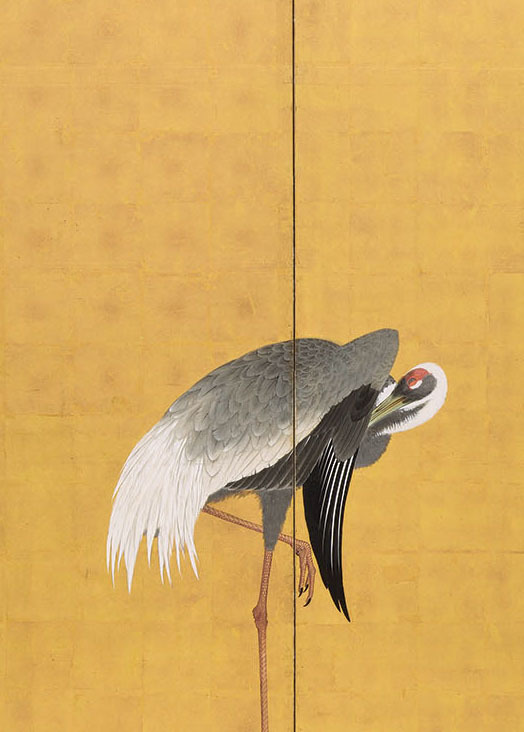Photo

Birds on a Branch, by Watanabe Shōtei, 1916
152 notes
·
View notes
Photo


The Nigatsu-do Hall, Nara, by Kawase Hasui, 1934
274 notes
·
View notes
Photo



Yuzen-painted geisha hikizuri. Late-Meiji era (1890-1912). This is a remarkable antique hikizuri - geisha dancing dress - with its vivid hawk, wave and pine motifs vividly created utilizing masterful yuzen-painting, sumi e painting, and silk and metallic embroidery. 48" from sleeve-end to sleeve-end x 67" height. In Japan, the hawk and pine tree in combination usually represents the power and longevity of the Tokugawa shogun. The Tokugawa shogunate was a feudal regime of Japan established by Tokugawa Ieyasu and ruled by the shoguns of the Tokugawa family. This period is known as the Edo period and gets its name from the capital city, Edo, which now is called Tokyo. The Tokugawa shogunate ruled from Edo Castle from 1603 until 1868, when it was abolished during the Meiji Restoration. The Kimono Gallery.
512 notes
·
View notes
Photo

Kitagawa Utamaro: Mallards and a Kingfisher, 1790
164 notes
·
View notes
Photo

Utagawa Hiroshige: The Pagoda of Zōjōji Temple and Akabane, 1857
250 notes
·
View notes
Photo



Kuniyoshi Utagawa: Minamoto Yorimitsu also known as Raiko
141 notes
·
View notes
Photo


Girl’s ceremonial kimono. 1925-1935, Japan. The Kimono Gallery. A small chirimen (crepe) silk kimono created for a girl for either the “ohichiya” naming day ceremony on the 7th night after birth, or alternately, for the miyamairi Shinto shrine initiation ceremony held about one month after birth. 34” from sleeve-end to sleeve-end x 36” height. The Art Deco art stenciled onto this child’s kimono is extremely rare and unusual – the girls parents or grandparents were obviously open to new ideas, as ceremonial garments such as this one typically exhibited traditional motifs. Japanese artists influenced the arrival of Art Deco in the West, however, the artistry on this kimono was at least partly impacted by art developments in Europe and the U.S.
523 notes
·
View notes
Photo

Kuniyoshi is famous for his excellence in design. Please pay attention to the kimono depicted in this picture. If you look closely, you can see that the cats are gathered together to form a skull pattern. "Kuniyoshi Moyau Cash Man with Tag Nozarashi Gosuke" by Utagawa Kuniyoshi (Collection of the Museum of Fine Arts, Boston)
214 notes
·
View notes
Photo

Katsushika Hokusai: Musical Instruments/ Horse's Tail (Uma no su), from the series A Selection of Horses (Umazukushi), with poems by Shinsokutei Kashimasu, Shūchōdō Monoyana and..., Edo period, 1822
119 notes
·
View notes
Photo

Three white mice and a feather, by Ohara Koson, ca. 1910
569 notes
·
View notes
Photo

Ohara Koson: Grasshoper and Fool Moon, 1910
508 notes
·
View notes
Photo


Cranes, 1772, Maruyama Ōkyo. Six-panel screen; ink, color, and gold leaf on paper, 67 1/4 × 137 3/4 × 3/4 in. Los Angeles County Museum of Art, Gift of Camilla Chandler Frost in honor of Robert T. Singer, L.2022.205.1
438 notes
·
View notes




